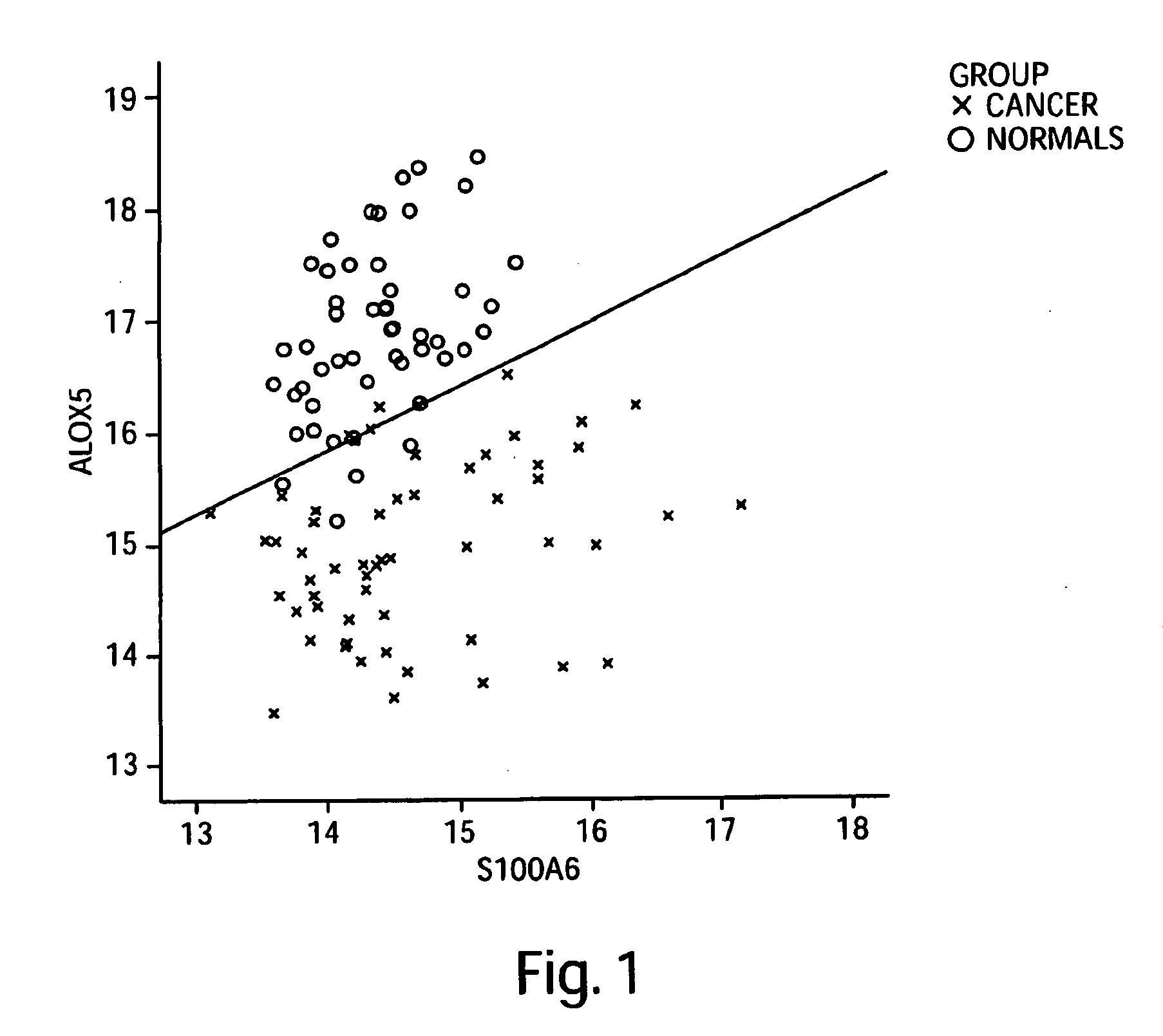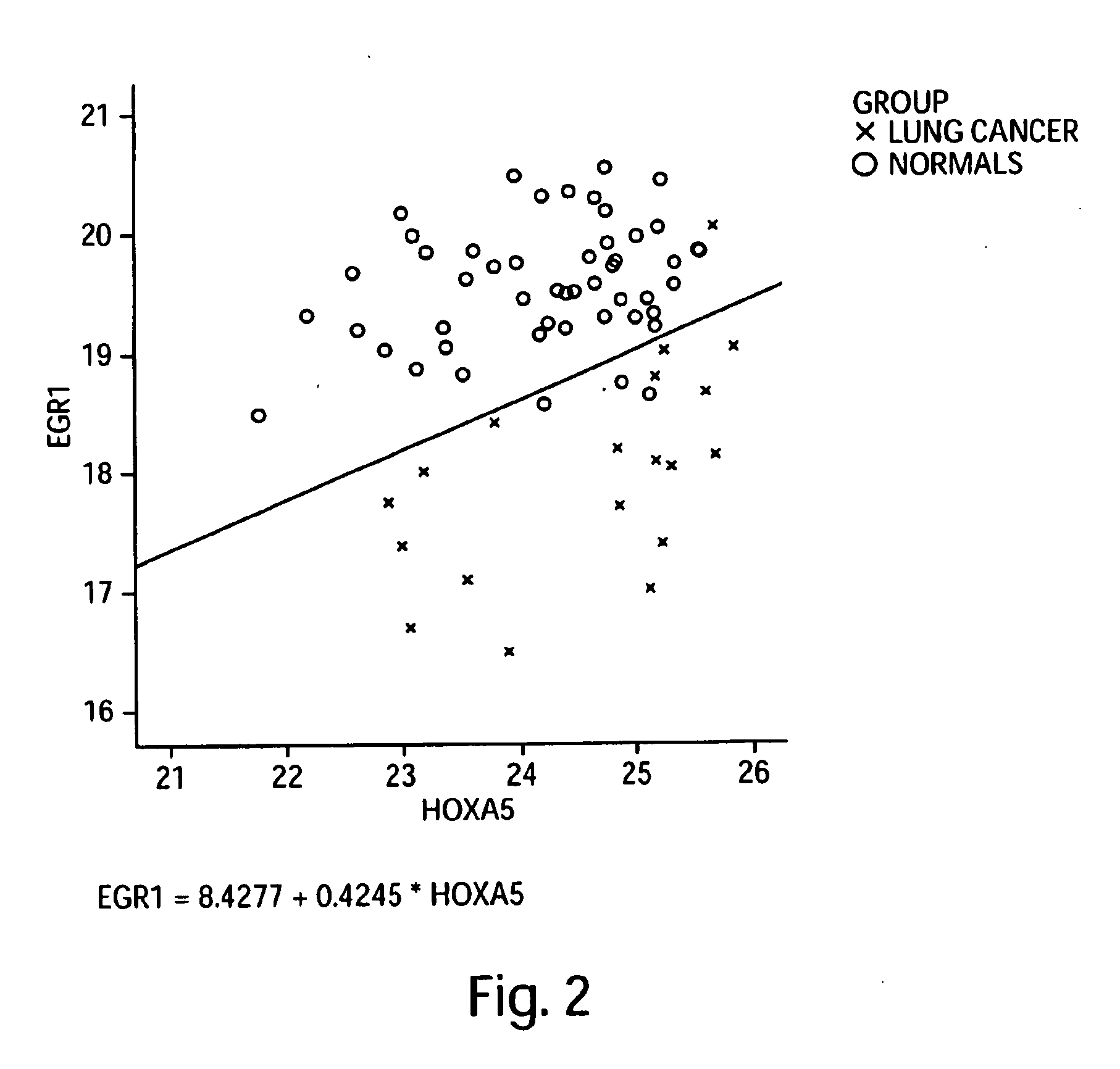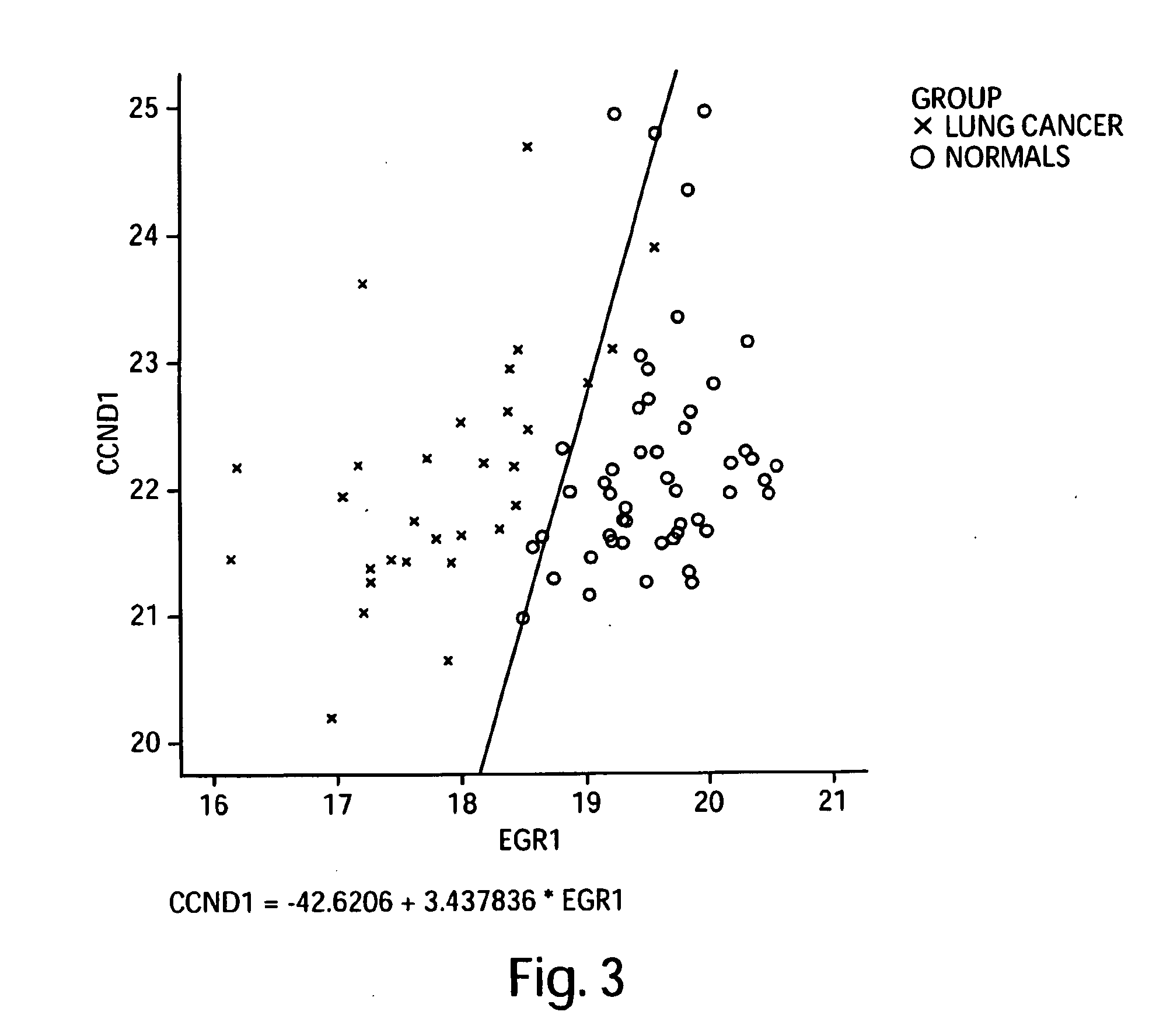Gene Expression Profiling for Identification, Monitoring and Treatment of Lung Cancer
a gene expression and gene technology, applied in the field of gene expression profiling for identification, monitoring and treatment of lung cancer, can solve the problems of poor prognosis, fast growth and high death rate of cancer, and cancer deaths among both men and women
- Summary
- Abstract
- Description
- Claims
- Application Information
AI Technical Summary
Problems solved by technology
Method used
Image
Examples
example 1
[0350]RNA was isolated using the PAXgene System from blood samples obtained from a total of 49 subjects suffering from lung cancer and 50 healthy, normal (i.e., not suffering from or diagnosed with lung cancer) subjects. These RNA samples were used for the gene expression analysis studies described in Examples 3-7 below.
[0351]Each of the normal subjects in the studies were non-smokers. Of the normal subjects, 14 were female, and 36 were male.
[0352]The inclusion criteria for the lung cancer subjects that participated in the study were as follows: each of the subjects had defined, newly diagnosed disease, the blood samples were obtained prior to initiation of any treatment for lung cancer, and each subject in the study was 18 years or older, and able to provide consent.
[0353]The following criteria were used to exclude subjects from the study: any treatment with immunosuppressive drugs, corticosteroids or investigational drugs; diagnosis of acute and chronic infectiou...
example 2
Enumeration and Classification Methodology based on Logistic Regression Models Introduction
[0355]The following methods were used to generate 1, 2, and 3-gene models capable of distinguishing between subjects diagnosed with lung cancer and normal subjects, with at least 75% classification accurary, as described in Examples 3-7 below.
[0356]Given measurements on G genes from samples of N1 subjects belonging to group 1 and N2 members of group 2, the purpose was to identify models containing g
[0357]Specifically, parameters from a linear logistic regression model were estimated to predict a subject's probability of belonging to group 1 given his (her) measurements on the g genes in the model. After all the mo...
example 3
Precision Profile™ for Lung Cancer
Gene Expression Profiles for Stage 1 and Stage 2 Lung Cancer:
[0402]Custom primers and probes were prepared for the targeted 113 genes shown in the Precision Profile™ for Lung Cancer (shown in Table 1), selected to be informative relative to biological state of lung cancer patients. Gene expression profiles for the 113 lung cancer specific genes were analyzed using the 19 RNA samples obtained from stage 1 and stage 2 lung cancer subjects, and the 50 RNA samples obtained from normal subjects, as described in Example 1.
[0403]Logistic regression models yielding the best discrimination between subjects diagnosed with stage 1 and stage 2 lung cancer and normal subjects were generated using the enumeration and classification methodology described in Example 2. A listing of all 1 and 2-gene logistic regression models capable of distinguishing between subjects diagnosed with stage 1 and stage 2 lung cancer and normal subjects with at least 75% accuracy is sh...
PUM
| Property | Measurement | Unit |
|---|---|---|
| time | aaaaa | aaaaa |
| time | aaaaa | aaaaa |
| time | aaaaa | aaaaa |
Abstract
Description
Claims
Application Information
 Login to View More
Login to View More - R&D
- Intellectual Property
- Life Sciences
- Materials
- Tech Scout
- Unparalleled Data Quality
- Higher Quality Content
- 60% Fewer Hallucinations
Browse by: Latest US Patents, China's latest patents, Technical Efficacy Thesaurus, Application Domain, Technology Topic, Popular Technical Reports.
© 2025 PatSnap. All rights reserved.Legal|Privacy policy|Modern Slavery Act Transparency Statement|Sitemap|About US| Contact US: help@patsnap.com



